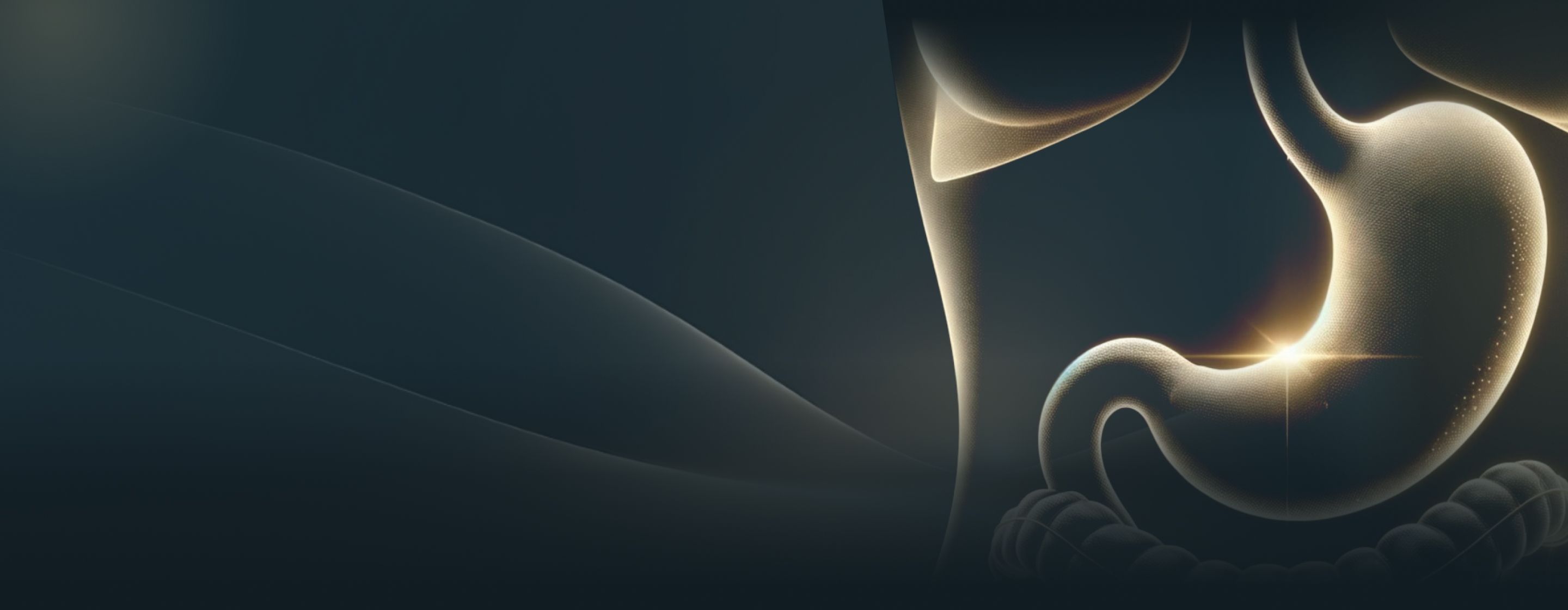
Revision of Gastric Bypass
Regained weight after a gastric bypass surgery? Reclaim your success with a non-surgical, minimally invasive revision procedure called transoral outlet reduction (TORe).
Featured in top scientific publications


What is transoral outlet reduction (TORe)?
Reverse weight regain
Weight regain after gastric bypass often occurs due to dilation of the gastric pouch and/or outlet. TORe+ and TORe (transoral outlet reduction) are a non-surgical, scar-free procedure that tightens the pouch and/or outlet to restore the original gastric bypass anatomy.
- Tackling weight regain.
- Post-bariatric surgery weight regain can be effectively addressed through non-surgical revisions by targeting the specific mechanisms contributing to weight gain.
- Non-surgical. No scars.
- Our revision procedures are performed endoscopically and avoid major incisions. This approach typically results in shorter recovery times, reduced risk of complications, and less post-operative discomfort compared to traditional surgery.
- Quick recovery.
- You can go home on the same day. Most patients take 1-3 days off work.

Purse-string TORe
Transoral outlet reduction (TORe) with argon plasma coagulation (APC) and purse-string
Discover purse-string TORe, which combines APC with a purse-string suturing pattern. This approach achieves an average weight loss of 10% compared to 3% with conventional TORe that uses APC and an interrupted pattern.
- Average weight loss 1
- 10%
- Procedure duration
- 30 minutes
Purse-string TORe+
Transoral outlet reduction (TORe) with argon plasma coagulation (APC), purse-string, and endoscopic submucosal dissection (ESD)
Experience the most advanced TORe procedure globally. The integration of purse-string TORe and ESD allows for deeper stitching of the stomach layers, leading to the highest weight loss rates shown to last 5+ years.2 When combined with medications, TORe+ results in a 15% reduction in body weight, matching surgical outcomes.3
- Average weight loss 1
- 12-15%
- Procedure duration
- 45 minutes
Eligibility
Who is TORe/TORe+ for?
- Previous Roux-en-Y gastric bypass patients
- with dilated pouches and/or outlets
- Those who regained weight with body mass index (BMI) over 30
- or between 27 and 29.9 with conditions such as high blood pressure, diabetes, high cholesterol, sleep apnea, or fatty liver disease


Testimonial
From 165 to 118 pounds - revision procedure was life-changing. It's not an end-all, but with work and dedication, the results are worth it. Do it!
How TORe and TORe+ work
The science behind TORe's efficacy
The TORe procedure tightens the stomach opening by sealing tissue with heat, stitching it in a circular pattern, and removing a thin layer of the lining.
- Enhanced stitching with APC.
- The standard TORe method uses argon plasma coagulation (APC) to remove the top stomach lining, enhancing stitching and resulting in more significant weight loss than stitching alone. Virtually all providers in the US use APC.
- Durable results with the purse-string pattern.
- Most providers use an interrupted stitch. Bariendo’s cofounders, Dr. Thompson and Dr. Jirapinyo, pioneered the purse-string pattern, using one suture for 8-14 stitches. This technique resists higher pressure and results in greater weight loss. It is for skilled providers.
- Deeper layers, better results with ESD.
- Endoscopic submucosal dissection (ESD) is an advanced technique that uncovers the stomach's deeper layers, allowing for deeper stitching. Dr. Christopher Thompson and Dr. Pichamol Jirapinyo pioneered its application to TORe.
Comparison
Which TORe method is best for you?
Need help choosing? Consult with our specialist
| Purse-string TORe+ with APC, purse-string pattern, ESD | Purse-string TORe with APC, purse-string pattern | Conventional TORe with APC, interrupted pattern | Revisional surgery | |
|---|---|---|---|---|
| Average weight loss | 12-15% 1 | 10% 1 | 3% | 12-15% 4 |
| Procedure duration | 45 minutes | 30 minutes | 30 minutes | 2-5 hours 5 |
| Availability | Rare, fewer than 10 doctors in the US. Exclusive to Bariendo Greater Miami. | Limited. Available at all Bariendo locations. | Common. Not offered at Bariendo. | Common. Not offered at Bariendo. |
| Best for | Those willing to travel and schedule in advance | Cost and convenience seekers | Not recommended due to low weight loss rates | When weight regain isn't mainly due to the enlarged pouch/outlet |
What sets us spart
Our revision procedures are unique
Bariendo’s TORe and TORe+ utilizes best practice protocols refined through a decade of research with year-long personalized support
- We invented the procedures
- Our co-founder, Dr. Christopher Thompson, invented and patented ESD-TORe, an endoscopic revision for gastric bypass, in 2018.
- Exclusively endoscopic approach
- While traditional revisions of prior bariatric surgeries are surgical, all of our revision procedures are endoscopic. This means they are non-surgical, leave no scars, and allow you to go home on the same day of the procedure with fast recovery.
- Combination therapy with medications for enhanced weight loss
- The emerging field of combining endoscopic procedures with weight loss medications is led by Dr. Jirapinyo, our co-founder. Our comprehensive treatment packages include prescribing a weight loss medication after the endoscopic revision procedure to further augment the amount of weight loss. (The costs of medication are not included; however, the medication may be covered by your insurance).
- Sustainable lifestyle changes through a dedicated care team
- Our support doesn’t end once the procedure is complete. For 12 months, you have direct access to a multidisciplinary team consisting of your physician, physician assistant, registered dietitian, exercise coach, and patient liaison. We also provide you with a smart scale that allows our care team to monitor your weight loss journey in real-time.
Frequently asked questions
-
The procedure itself takes approximately 45 minutes. However, you should plan on spending about half a day with us including preparation and recovery.
-
Patients go home on the same day. Most take a few days off to recover at home before returning to work. After the procedure, patients follow a full liquid meal plan, which includes protein shakes and similar products, then transition to a soft diet, which includes easy-to-eat foods such as oatmeal and bananas, and then return to regular eating.
-
Endoscopic revision is safer, done through the mouth with a 1% complication rate, and offers quick recovery. Surgical revisions, such as making the pouch smaller or altering the bypass, are riskier with an average complication rate of 29%.4
-
Mild indigestion, nausea, upper abdominal pressure or pain may occur. The major complication rate, including infection or bleeding, is less than 1%.
-
An upper endoscopy or barium test may be recommended to check your pouch and outlet if not recently evaluated. Usually, this is done at the beginning of the procedure.
-
Unfortunately, insurance does not cover endoscopic sleeve revision procedures yet. However, we offer several financing options. Learn more about our pricing and financing options.
Ready to take the next step?
Start your weight loss journey with doctors trusted by thousands.
References
- Jirapinyo P, de Moura DTH, Thompson CC. Endoscopic submucosal dissection with suturing for the treatment of weight regain after gastric bypass: outcomes and comparison with traditional transoral outlet reduction (with video). Gastrointest Endosc. 2020 Jun;91(6):1282-1288. doi: 10.1016/j.gie.2020.01.036. Epub 2020 Jan 31. PMID: 32007520; PMCID: PMC7245570.
- Jirapinyo P, Kumar N, AlSamman MA, Thompson CC. Five-year outcomes of transoral outlet reduction for the treatment of weight regain after Roux-en-Y gastric bypass. Gastrointest Endosc. 2020 May;91(5):1067-1073. doi: 10.1016/j.gie.2019.11.044. Epub 2019 Dec 7. PMID: 31816315; PMCID: PMC7183415.
- Jirapinyo P, Thompson CC. Combining transoral outlet reduction with pharmacotherapy yields similar 1-year efficacy with improved safety compared with surgical revision for weight regain after Roux-en-Y gastric bypass (with videos). Gastrointest Endosc. 2023 Oct;98(4):552-558. doi: 10.1016/j.gie.2023.04.2092. Epub 2023 May 5. PMID: 37150416.
- Dolan RD, Jirapinyo P, Thompson CC. Endoscopic versus surgical gastrojejunal revision for weight regain in Roux-en-Y gastric bypass patients: 5-year safety and efficacy comparison. Gastrointest Endosc. 2021 Nov;94(5):945-950. doi: 10.1016/j.gie.2021.06.009. Epub 2021 Jun 12. PMID: 34126065; PMCID: PMC8908793.
- Fulton, C., Sheppard, C., Birch, D., Karmali, S., & de Gara, C. (2017). A comparison of revisional and primary bariatric surgery. Canadian Journal of Surgery, 60(3), 205-211. doi: 10.1503/cjs.006116